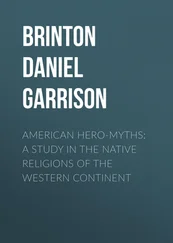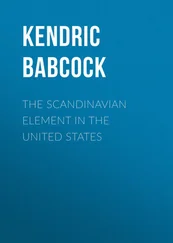Hubert Bancroft - The Native Races [of the Pacific states], Volume 1, Wild Tribes
Здесь есть возможность читать онлайн «Hubert Bancroft - The Native Races [of the Pacific states], Volume 1, Wild Tribes» — ознакомительный отрывок электронной книги совершенно бесплатно, а после прочтения отрывка купить полную версию. В некоторых случаях можно слушать аудио, скачать через торрент в формате fb2 и присутствует краткое содержание. ISBN: , Жанр: foreign_antique, foreign_prose, на английском языке. Описание произведения, (предисловие) а так же отзывы посетителей доступны на портале библиотеки ЛибКат.
- Название:The Native Races [of the Pacific states], Volume 1, Wild Tribes
- Автор:
- Жанр:
- Год:неизвестен
- ISBN:http://www.gutenberg.org/ebooks/41070
- Рейтинг книги:5 / 5. Голосов: 1
-
Избранное:Добавить в избранное
- Отзывы:
-
Ваша оценка:
- 100
- 1
- 2
- 3
- 4
- 5
The Native Races [of the Pacific states], Volume 1, Wild Tribes: краткое содержание, описание и аннотация
Предлагаем к чтению аннотацию, описание, краткое содержание или предисловие (зависит от того, что написал сам автор книги «The Native Races [of the Pacific states], Volume 1, Wild Tribes»). Если вы не нашли необходимую информацию о книге — напишите в комментариях, мы постараемся отыскать её.
The Native Races [of the Pacific states], Volume 1, Wild Tribes — читать онлайн ознакомительный отрывок
Ниже представлен текст книги, разбитый по страницам. Система сохранения места последней прочитанной страницы, позволяет с удобством читать онлайн бесплатно книгу «The Native Races [of the Pacific states], Volume 1, Wild Tribes», без необходимости каждый раз заново искать на чём Вы остановились. Поставьте закладку, и сможете в любой момент перейти на страницу, на которой закончили чтение.
Интервал:
Закладка:
In general the Toltecan family may be described as of good stature, well proportioned, rather above medium size, of a light copper color; as having long black obliquely pointed eyes, regular white teeth, glossy black hair, thin beard, prominent cheek bones, thick lips, large aquiline nose, and retreating forehead. A gentle expression about the mouth is blended with severity and melancholy in the upper portion of the face. They are brave, cruel in war, sanguinary in religion, and revengeful. They are intelligent; possess minds well adapted to the pursuit of knowledge; and, at the time of the arrival of the Spaniards, were well advanced in history, architecture, mathematics, and astronomy. They constructed aqueducts, extracted metals, carved images in gold, silver, and copper; they could spin, weave, and dye; they could accurately cut precious stones; they cultivated corn and cotton; built large cities, constructing their buildings of stone and lime; made roads and erected stupendous tumuli.
Certain ethnological zones have been observed by some, stretching across the continent in various latitudes, broken somewhat by intersecting continental elevations, but following for the most part isothermal lines which, on coming from the east, bend northward as the softer air of the Pacific is entered. Thus the Eskimos nearly surround the pole. Next come the Tinneh, stretching across the continent from the east, somewhat irregularly, but their course marked generally by thermic lines, bending northward after crossing the Rocky Mountains, their southern boundary, touching the Pacific, about the fifty-fifth parallel. The Algonkin family border on the Tinneh, commencing at the mouth of the St Lawrence River, and extending westward to the Rocky Mountains. Natural causes alone prevent the extension of these belts round the entire earth. Indeed, both philologists and physiologists trace lines of affinity across the Pacific, from island to island, from one continent to the other; one line, as we have seen, crossing Bering Strait, another following the Aleutian Archipelago, and a third striking the coast south of San Francisco Bay.
SAVAGE HUMANITY.It is common for those unaccustomed to look below the surface of things, to regard Indians as scarcely within the category of humanity. Especially is this the case when we, maddened by some treacherous outrage, some diabolic act of cruelty, hastily pronounce them incorrigibly wicked, inhumanly malignant, a nest of vipers, the extermination of which is a righteous act. All of which may be true; but, judged by this standard, has not every nation on earth incurred the death penalty? Human nature is in no wise changed by culture. The European is but a white-washed savage. Civilized venom is no less virulent than savage venom. It ill becomes the full grown man to scoff at the ineffectual attempts of the little child, and to attempt the cure of its faults by killing it. No more is it a mark of benevolent wisdom in those favored by a superior intelligence, with the written records of the past from which to draw experience and learn how best to shape their course for the future, to cry down the untaught man of the wilderness, deny him a place in this world or the next, denounce him as a scourge, an outlaw, and seize upon every light pretext to assist him off the stage from which his doom is so rapidly removing him. We view man in his primitive state from a wrong stand-point at the outset. In place of regarding savages as of one common humanity with ourselves, and the ancestors perhaps of peoples higher in the scale of being, and more intellectual than any the world has yet seen, we place them among the common enemies of mankind, and regard them more in the light of wild animals than of wild men.
And let not him who seeks a deeper insight into the mysteries of humanity despise beginnings, things crude and small. The difference between the cultured and the primitive man lies chiefly in the fact that one has a few centuries the start of the other in the race of progress. Before condemning the barbarian, let us first examine his code of ethics. Let us draw our light from his light, reason after his fashion; see in the sky, the earth, the sea, the same fantastic imagery that plays upon his fancy, and adapt our sense of right and wrong to his social surroundings. Just as human nature is able to appreciate divine nature only as divine nature accords with human nature; so the intuitions of lower orders of beings can be comprehended only by bringing into play our lower faculties. Nor can we any more clearly appreciate the conceptions of beings below us than of those above us. The thoughts, reasonings, and instincts of an animal or insect are as much a mystery to the human intellect as are the lofty contemplations of an archangel.
PACIFICATION OF TIERRA FIRME.Three hundred and thirty-six years were occupied in the discovery of the western border of North America. From the time when, in 1501, the adventurous notary of Triana, Rodrigo de Bastidas, approached the Isthmus of Darien, in search of gold and pearls, till the year 1837, when Messrs Dease and Simpson, by order of the Hudson's Bay Company, completed the survey of the northern extremity, which bounds the Arctic Ocean, the intervening territory was discovered at intervals, and under widely different circumstances. During that time, under various immediate incentives, but with the broad principle of avarice underlying all, such parts of this territory as were conceived to be of sufficient value were seized, and the inhabitants made a prey to the rapacity of the invaders. Thus the purpose of the worthy notary Bastidas, the first Spaniard who visited the continent of North America, was pacific barter with the Indians; and his kind treatment was rewarded by a successful traffic. Next came Columbus, from the opposite direction, sailing southward along the coast of Honduras on his fourth voyage, in 1502. His was the nobler object of discovery. He was striving to get through or round this tierra firme which, standing between himself and his theory, persistently barred his progress westward. He had no time for barter, nor any inclination to plant settlements; he was looking for a strait or passage through or round these outer confines to the more opulent regions of India. But, unsuccessful in his laudable effort, he at length yielded to the clamorous cupidity of his crew. He permitted his brother, the Adelantado, to land and take possession of the country for the king of Spain, and, in the year following, to attempt a settlement at Veragua.
FIRST INTERCOURSE WITH EUROPEANS.In 1506-8, Juan de Solis with Pinzon continued the search of Columbus, along the coast of Yucatan and Mexico, for a passage through to the southern ocean. The disastrous adventures of Alonzo de Ojeda, Diego de Nicuesa, and Juan de la Cosa, on the Isthmus of Darien, between the years 1507 and 1511, brought into more intimate contact the steel weapons of the chivalrous hidalgos with the naked bodies of the savages. Vasco Nuñez de Balboa, after a toilsome journey across the Isthmus in 1513, was rewarded by the first view of the Pacific Ocean, of which he took possession for the king of Spain on the twenty-fifth of September. The white sails of Córdova Grijalva, and Garay, descried by the natives of Yucatan and Mexico in 1517-19, were quickly followed by Cortés and his keen-scented band of adventurers, who, received by the unsuspecting natives as gods, would have been dismissed by them as fiends had not the invasion culminated in the conquest of Mexico. During the years 1522-24, Cortés made expeditions to Tehuantepec, Panuco, and Central America; Gil Gonzales and Cristobal de Olid invaded Nicaragua and Honduras. Nuño de Guzman in 1530, with a large force, took possession of the entire northern country from the city of Mexico to the northern boundary of Sinaloa; and Cabeza de Vaca crossed the continent from Texas to Sinaloa in the years 1528-36. Journeys to the north were made by Cortés, Ulloa, Coronado, Mendoza, and Cabrillo between the years 1536 and 1542. Hundreds of Roman Catholic missionaries, ready to lay down their lives in their earnest anxiety for the souls of the Indians, spread out into the wilderness in every direction. During the latter part of the sixteenth century had place, – the expedition of Francisco de Ibarra to Sinaloa in 1556, the campaign of Hernando de Bazan against the Indians of Sinaloa in 1570, the adventures of Oxenham in Darien in 1575, the voyage round the world of Sir Francis Drake, touching upon the Northwest Coast in 1579; the expedition of Antonio de Espejo to New Mexico in 1583; Francisco de Gali's return from Macao to Mexico, by way of the Northwest Coast, in 1584; the voyage of Maldonado to the imaginary Straits of Anian in 1588; the expedition of Castaño de Sosa to New Mexico in 1590; the voyage of Juan de Fuca to the Straits of Anian in 1592; the wreck of the 'San Agustin' upon the Northwest Coast in 1595; the voyage of Sebastian Vizcaino towards California in 1596; the discoveries of Juan de Oñate in New Mexico in 1599, and many others. Intercourse with the natives was extended during the seventeenth century by the voyage of Sebastian Vizcaino from Mexico to California in 1602; by the expedition of Francisco de Ortega to Lower California in 1631; by the journey of Thomas Gage from Mexico to Guatemala in 1638; by the voyage round the world of William Dampier in 1679; by the reckless adventures of the Buccaneers from 1680 to 1690; by the expedition of Isidor de Otondo into Lower California in 1683; by the expedition of Father Kino to Sonora and Arizona in 1683; by the expeditions of Kino, Kappus, Mange, Bernal, Carrasco, Salvatierra, and others to Sonora and Arizona in 1694-9; and by the occupation of Lower California by the Jesuits, Salvatierra, Ugarte, Kino, and Piccolo, from 1697 to 1701. Voyages of circumnavigation were made by Dampier in 1703-4; by Rogers in 1708-11; by Shelvocke in 1719-22, and by Anson in 1740-4. Frondac made a voyage from China to California in 1709.
Читать дальшеИнтервал:
Закладка:
Похожие книги на «The Native Races [of the Pacific states], Volume 1, Wild Tribes»
Представляем Вашему вниманию похожие книги на «The Native Races [of the Pacific states], Volume 1, Wild Tribes» списком для выбора. Мы отобрали схожую по названию и смыслу литературу в надежде предоставить читателям больше вариантов отыскать новые, интересные, ещё непрочитанные произведения.
Обсуждение, отзывы о книге «The Native Races [of the Pacific states], Volume 1, Wild Tribes» и просто собственные мнения читателей. Оставьте ваши комментарии, напишите, что Вы думаете о произведении, его смысле или главных героях. Укажите что конкретно понравилось, а что нет, и почему Вы так считаете.
![Hubert Bancroft The Native Races [of the Pacific states], Volume 1, Wild Tribes обложка книги](/books/750126/hubert-bancroft-the-native-races-of-the-pacific-s-cover.webp)








![Hubert Bancroft - The Native Races [of the Pacific states], Volume 5, Primitive History](/books/749157/hubert-bancroft-the-native-races-of-the-pacific-s-thumb.webp)


